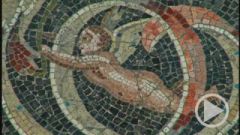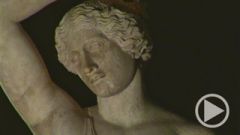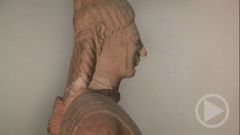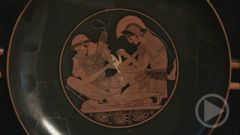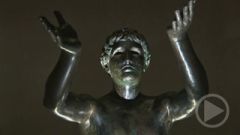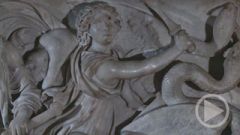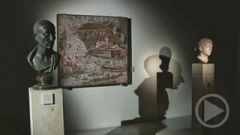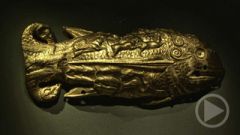- Home
- »
- Germany
- »
- Berlin
- »
- Museum Island
- »
- Pergamon Museum
- »
- The Collection of Classical Antiquities
- »
- The Pergamon Museum - The Pergamon Altar
The Pergamon Altar
The Pergamon Altar
A traveller on the road 150 years before Christ who approached the castle hill of Pergamon would gaze upon one of the most important royal cities in all of Greece. And on the Acropolis, he would find one of antiquity's most significant structures: the great Altar of Zeus, an unmatched masterpiece of Hellenistic art.
At the time, the altar was almost square in shape. Only the front third has been reconstructed here in the Berlin Museum. Although we can't be sure exactly which gods the altar was dedicated to, in addition to Zeus, the father of all gods, it was probably also erected to honour Athena, the city's patron goddess.
Our traveller, however, would not have had access to the sacrificial area. Only priests, the king and the highest ranked dignitaries could ascend the steps and enter the upper, inner courtyard, where animal sacrifices were burned on a stone bench. But even two thousand years ago, our visitor would surely have stood in awe before the largest artwork ever created by Pergamon's famed sculptors – the magnificent frieze that ran around the entire altar. The reliefs would have had an even more profound effect on the ancient traveller than they do today, as they were originally colourfully painted.
King Eumenes the Second had the altar built in honour of the Gods, beginning in the year 170 B.C. It was undoubtedly partly as thanks for his victory over the Celts, who had held Asia Minor in fear and terror for decades. The frieze, too, depicts a war: the clash of the titans. The sons of Gaea, the Earth Mother, rebelled against the rule of the Gods on Olympus. Like a 3-dimensional photograph, the 113-metre long frieze shows the violent fighting shortly before the Gods triumphed. With a dramatic sense of movement, the battle rages on every side. The Olympians fight in groups against the titans, with human torsos and legs made of snakes. On the south frieze, you see the gods of light, on the north frieze the gods of war. To the right and left of the stairs are Dionysus and Poseidon.
But the first thing our ancient traveller saw was perhaps the most dramatic scene. He would have approached the altar from the rear – and this is where Zeus and Athena fight. Zeus has engaged three titans at once. His right arm is drawn right back. It most likely once held a lightening bolt, perhaps of gilded bronze. He is naked to the waist, his powerful muscles taut as steel. Facing him, the titan Porphyrion raises his arm to fend off the blow – to no avail. The next moment, Zeus will strike him dead.
Athena, too, is on the verge of victory. With a mighty grip, she pulls the winged titan Alcyoneus off his feet by the hair. One of Alcyoneus' feet is still touching his Mother Earth. As long as he remains connected to her, new strength flows into him. Next to Athena, Gaea herself is appearing to plead for the life of her son – in vain. Athena will rip him from her. The gods' superiority can be clearly seen in their stances and their faces. The titans writhe in desperation, pain in their faces. They are at the end of their strength, near death. But the Olympian immortals stand upright, bursting with power. Their expressions are unruffled, almost motionless – even in battle, they stand far above the mortals. The ancient visitor would have understood the allusion immediately – the Greeks saw themselves this very same way. With their superior civilisation, they vanquished the "barbarian" Celts.


